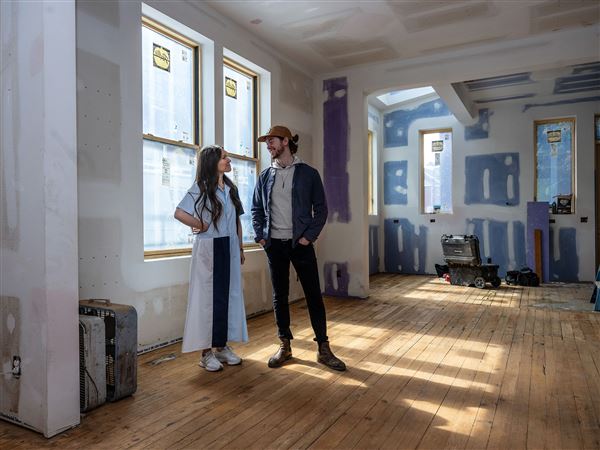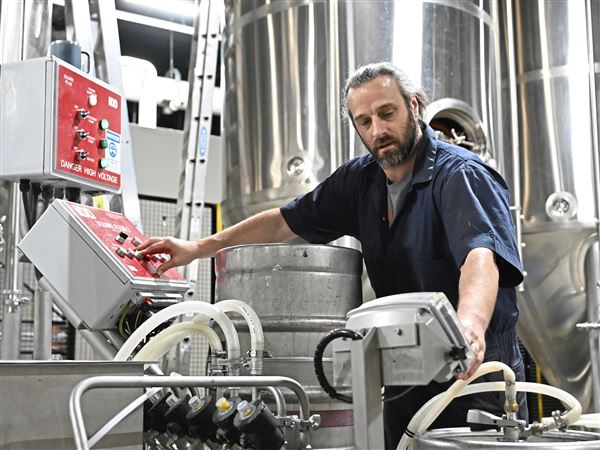In the sometimes angry debate about whether genes or environment cause autism spectrum disorder, science implicates both.
Tom Insel, director of the National Institute of Mental Health, said in 2012 that “studies suggest it can be both,” while foreseeing a long journey to determine the “many causes for autism and many roads to find them.”
Two recent studies involving top Pittsburgh researchers have taken strides in that journey by explaining the complex but substantial role of genetics in autism. Both studies emphasize the predominant role of genetics but also can explain mechanisms by which environmental exposures can affect risk, either by inducing genetic mutations that can contribute to autism or mimicking the effect of mutations.
One study published last week in Nature, involving Kathryn Roeder of Carnegie Mellon University and Bernie Devlin of the University of Pittsburgh School of Medicine, expands the number of genes directly associated with autism from nine to 33. It also found another 74 genes that seem likely to be involved.
A rare mutation in any one of these genes, based on large-scale statistical analysis the Pittsburgh team performed, can disrupt typical formation of nerve networks or the function of synapses — the structures at the ends of brain cells or neurons that allow cells to communicate with each other.
It complements findings of their study published July 20 in Nature Genetics, led by Ms. Roeder and also including Mr. Devlin, who are married. That international research team determined that “most of the genetic risk for autism comes from versions of genes that are common in the population,” rather than rare, spontaneous genetic glitches that occur in the 33 newly discovered genes.
“This makes sense because typical development of brain cells require intricate coordination of thousands of genes and appropriate communication between cells to ensure development of the brain — the most complicated organ in the human body,” said Ms. Roeder, a professor in CMU’s Department of Statistics and the Lane Center for Computational Biology. She is considered a leading expert in statistical genomics and the genetic basis of complex disease.
Patrick Sullivan, a University of North Carolina physician not involved in the study, called it “an exceptional piece of work” that establishes a foundation for future research while revealing that the cause of autism is “far more complicated than any of us thought. ”
“The cool thing about this study is that they put together some of the largest samples we’ve ever seen,” he said. “This will prove to be a really big step for us.”
As the study reveals, understanding the role of genes, individually and cumulatively, is necessary to solve the mysteries of autism.
As it turns out, all humans have variations in common genes, which they inherit from their parents. In certain genes, such variants could affect the development of neurons and synapses, and thus brain function and social ability. But each common variant produces only a modest impact, said Mr. Devlin, a medical school professor of psychiatry. However, if a child inherits a large number of these common variants, he or she could develop autism.
But another genetic process in autism involves the fetus having what is known as a “de novo” variant. These involve new variations that occur in those 33 newly discovered genes, and possibly the total 107 genes, but were not present in either parent. These variants “have substantial impact on the risk of developing autism,” Mr. Devlin said.
Even though neither parent has the de novo mutation, which means it is not inherited, it arises in the sperm cell four times more often than the egg, probably due to the many cell divisions that sperm cells undergo. De novo mutations occur routinely, with each child on average having about 50 throughout his or her genome that potentially could affect bodily functions.
When a new variant involved with autism combines with a large accumulation of common variants inherited from the parents, the child can be pushed over the top, or in more technical terms, “cross the threshold of liability” into autism.
So the complexity of autism becomes clearer: Either a new major variation in a gene, an accumulation of many common variants, or combinations of the two can lead to autism. “This is all under the assumption that risk can act additively,” Mr. Devlin said. “But this seems to be a good approximation of reality.”
While the studies help identify specific genes and some of the genetic mechanics of autism, it still does not answer another big question that continues to confound scientists.
Autism can have a profound impact on IQ, leaving the child with extremely low mental and social ability, while others can have normal and even exceptional IQ levels and certain intellectual ability in math, science and memory. Think of the autistic savant in the 1988 movie “Rain Man” or the abilities of Temple Grandin, an expert in animal behavior. What’s common among the full spectrum of disorders is the negative impact in their ability to socialize or develop relationships.
Those factors lead to the million dollar question: Why does autism affect both IQ and social interaction? “We don’t yet understand the relationship between social ability and IQ,” Mr. Devlin said. “That is one thing that puzzles Kathryn [Roeder] and me in the field, and it’s the focus of our research.”
Before the latest study, researchers were trying to identify autism genes one at a time. But Ms. Roeder said statistical analysis of large quantities of data, using a model she and her team developed, dramatically sped up the process. “We were able to find genes much faster and determine how the genes work together so that we understand the network of genes and their impact on autism,” she said. A better understanding of what networks are key might make treatments possible without determining how each variation affects brain function.
“Now we have 33 genes that we are certain of and 74 others that we are quite certain of,” Ms. Roeder said. “We are now investigating how these genes work together to build brain components, which presumably differ in autism.”
When it comes to genes vs. environment in autism, Mr. Devlin compared it to height, which has a strong genetic component. But height also can be influenced by environmental factors, as occurred over the past century with steady increases in height worldwide due to living standards, improved health care and other environmental inputs. “So the inheritability of height is not incompatible with the environmental impact,” he said.
Autism research in recent years, Dr. Insel said in his blog, has had another important impact. It It also helps absolve parents of blame when their child develops autism.
Both parents carry some reduced form of the syndrome in terms of common variants. But the new variations in the child also play a major role. De novo mutations in the sperm or egg occur by chance.
“Perhaps this insight will finally reduce the ’blame the parents’ legacy perpetuated for too long in the absence of scientific evidence,” he said.
“
First Published: November 4, 2014, 5:00 a.m.















